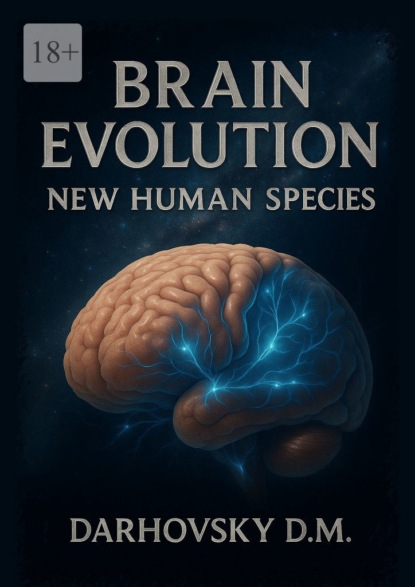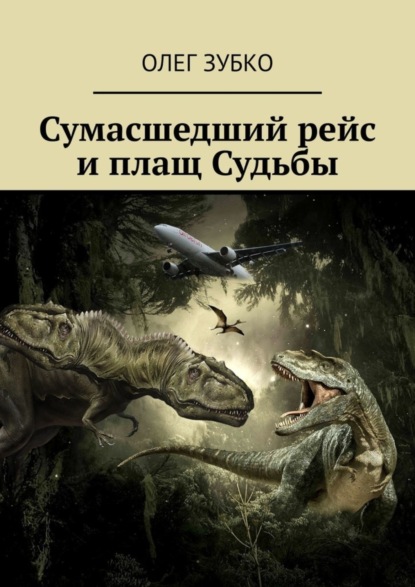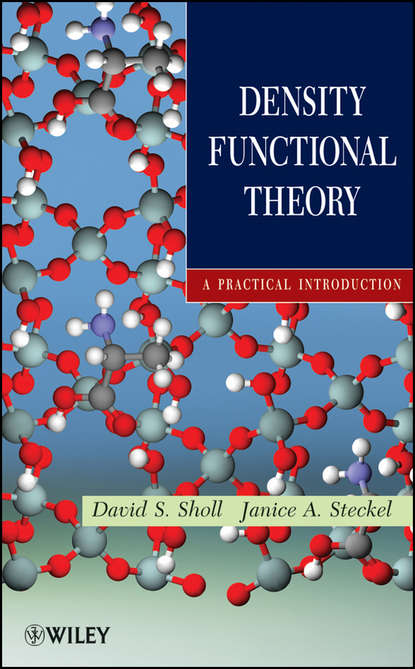- -
- 100%
- +
Hesychasm is based on the idea that through silence, solitude, and constant prayer, a person can clear his mind of worldly worries and aspirations, distract himself from external noise, and focus on an internal dialogue with God. The Jesus Prayer, repeated incessantly, becomes not only a form of conversion, but also a means of self-knowledge and self-purification.
The goal of the hesychast is to achieve a state in which he can see the light of Tabor – the brightness that, according to the Gospel, the apostles saw on Mount Tabor during the Transfiguration of Christ. This vision symbolizes the encounter with the Divine and deification, the process by which man becomes like God in his qualities and actions.
Hesychasm is not just a spiritual practice, but also a mystical path that leads to a deep transformation of the personality. He teaches that true enlightenment and understanding come not through external achievements, but through inner work on oneself, through a constant striving for spiritual perfection.
Hesychasm contributes to a variety of spiritual practices aimed at achieving enlightenment. He emphasizes that the path to true understanding and harmony with the world lies through silence, prayer and self-denial. This teaching offers each person the opportunity to explore the depths of their own consciousness and find the light that will illuminate the path to spiritual fullness.
Modern brain research using neuroimaging techniques allows us to look into the areas where our deepest feelings and experiences are formed. The limbic system, located deep in our brains, is a kind of repository of emotions, memories, and aspects of personality. It is like a boundary where instinctive reactions and higher cognitive functions converge.

Interestingly, the word ‘limbo’ in Latin means ‘edge’ or ‘limit’, and this is reflected in the religious concept of limbo, which was used in medieval Christian theology. Limbo is described as an intermediate state where souls who have not made it to heaven are waiting for the Day of Judgment. It is not a place of punishment, but rather of purification, where souls shed illusions and conceits in order to prepare for eternal life.
Perhaps this is a coincidence in the names, but if we draw a parallel between the limbic system of the brain, which stores and manages our emotions and personality, and the concept of Limbo as a place of spiritual cleansing, we will notice a lot of similarities. Both concepts reflect the boundary between the habitual state of awareness and the transition to a higher level of consciousness.
In the Christian tradition, the idea of Limbo serves as a reminder that each person must go through a process of introspection and purification in order to achieve true understanding and harmony with the Divine. It is a process that requires us to let go of worldly attachments and let go of limiting beliefs.
In this context, hesychasm and other Christian practices of spiritual cleansing can be seen as pathways to attain enlightenment, similar to what is described in Eastern traditions. They offer us methods to achieve deep inner peace and understanding that can lead to the transformation of our consciousness and life.
Thus, in Christianity, as in many other religious traditions, the concept of enlightenment and spiritual purification plays a central role, pointing to the ability of each person to achieve a higher state of consciousness and harmony with the world around them.

In Judaism, Kabbalah is a deep and complex system of esoteric teachings that explores the inner aspects of the Torah and the nature of the universe. Kabbalistic practices and meditations are for those who seek to achieve a deeper spiritual understanding and reconnection with the Divine.
One of the key practices in Kabbalah is Kavanot, a meditative focus on sacred texts and divine names. These meditations involve not just the mechanical repetition of words, but a deep inner immersion in their meaning, which allows the practitioner to rise to a higher level of spiritual awareness.
The names of the angels and the aspects of the Divine that occur in Kabbalistic texts are seen as symbolic ‘keys’ that open access to the higher spiritual worlds. These names and symbols guide the soul on its journey through the ascending levels of the spirit world, leading to the possibility of encountering the Divine.
Kabbalistic teachings and practices offer a unique path to spiritual enlightenment that requires the practitioner not only to know and understand, but also to have a deep personal commitment. This is a path that can lead to the transformation of not only the inner world of a person, but also his interaction with the outside world.
Kabbalah in Judaism, like other mystical traditions, offers spiritually elite practitioners the tools to attain enlightenment and ascent of the soul. These spiritual techniques allow one to explore the depths of one’s consciousness and strive for an elevated state where one can experience oneness with the Divine and understand the true nature of one’s being.
Exploring the history of science and the great minds who have made invaluable contributions to our understanding of the world, it is impossible not to note the significant influence of Judaism, this ancient tradition has not only nurtured generations of outstanding scientists, but also formed the fundamental principles of the spirit of inquiry and critical thinking that underpin modern science.

Kaivalya, as described in the Upanishads, is the culmination of the spiritual path in yoga – it is a state of absolute freedom and independence from all material and mental bonds. In this state, the yogi realizes that his true nature is pure consciousness, not limited by time and space, not connected to the physical body and mind.
The Kaivalya Upanishad, one of the ancient texts dating from the first millennium BCE, details the path to this higher state. A person who has attained Kaivalya experiences deep self-awareness and oneness with all things. He sees himself not as a separate being, but as an integral part of the universe, eternal and unchanging.
This state of enlightenment in yoga is not just liberation from suffering or the attainment of peace and tranquility. It is the full realization of one’s spiritual potential, the realization of one’s true self, which exists beyond all conventions and limitations. Kaivalya means to live in complete harmony with one’s own nature, to be completely self-sufficient and independent of external circumstances.
The path to Kaivalya is the path to the deepest understanding of oneself and the world, the path to the realization that the true essence of a person is consciousness, which is the source of all that exists. This understanding brings with it not only peace and harmony, but also a deep sense of freedom and joy from the realization of one’s eternal nature.
Kaivalya is eternal, all-pervading, formless, unmanifested, infinite, incomprehensible, without beginning, middle and end, which is consciousness. He is the life force, the breath, the fire, and the moon. Eternity is him, everything that has arisen, was and will be is him.
Kaivalya – absolute liberation, non-attachment to something or someone, self-sufficiency. Perfection, that is, the full disclosure of one’s spiritual potential and the realization of one’s destiny as a rational being.
Kaivalya in yoga is not just a goal that the practitioner strives for. This is a state that transforms all life, making it complete, meaningful and free from illusions. “Know it, find liberation, there is no other way’ – these words from the Upanishads remind us that true enlightenment is available to anyone who seeks it, and that this journey is in itself the path to liberation.
In today’s world of rapid changes and constant stress, yoga is becoming not just a trend, but a necessity in everyday life. More and more of the world’s leading companies are incorporating the practice of yoga into their employee development programs, recognizing its potential to improve concentration, increase energy levels, and reach new mental heights. This ancient practice not only helps to strengthen the body, but also cleanses the mind, paving the way for innovation and creativity.

“The image of the All-Seeing Eye in a triangle, found in various cultures, is often interpreted as a symbol of enlightenment and spiritual vision. This symbol is a metaphor for deeper perception, the ability to see beyond the physical world and understand hidden truths.
In many traditions, the All-Seeing Eye is associated with divine observation and omniscience. It symbolizes the universal consciousness that is able to see all times and spaces, past and future, and combines the wisdom and understanding of the Architect of the Universe.
This symbol may also reflect the concept of the ‘sixth sense’ or intuition, which goes beyond the ordinary senses and allows a person to perceive electromagnetic fields or other subtle energies that are not available to the ordinary senses of perception. This ‘sixth sense’ can be associated with intuitive understanding, premonitions, or even psychic abilities.
The all-seeing eye, therefore, becomes a symbol of the desire for enlightenment and the search for a deep understanding of the world. It reminds us that there are higher levels of consciousness available to those who seek spiritual growth and self-knowledge. This symbol encourages us to open our inner eyes and see the world in a new light, realizing our connection to the larger reality and our role in the fabric of the universe.
In all the teachings, we can also observe that the word liberation is often mentioned. What exactly does liberation come from? Let’s try to analyze this issue in more detail.
Liberation, or ‘moksha’ in Hinduism, ‘nirvana’ in Buddhism, ‘fana’ in Sufism, and similar concepts in other traditions, often indicate a process of getting rid of the illusions and limitations that our own perception imposes on us. It is liberation from the chains that shackle our ability to see the world as it really is.
The moment we abandon the subjective perception of the self, a kind of ‘resetting’ of our personality occurs. All the beliefs, knowledge and worldviews that we have accumulated, often under the influence of the surrounding society, can be revised. This is not just a change in views, it is a deep rethinking of the very essence of our “I”.
When a person is freed from these external and internal limitations, he begins to see reality without filters, without the bias that acquired knowledge creates. This state can be compared to the “resetting” of the personality, when the old parameters of character and ego give way to a new understanding.
This process of liberation opens the door to the possibility of consciously choosing the qualities and characteristics that we want to develop in ourselves. We begin to realize that the limitations we thought were inevitable were actually of our own making. And when we free ourselves from these self-imposed limitations, we open ourselves up to new possibilities and abilities that previously seemed unattainable.
Thus, the path to liberation in spiritual teachings is not just a path to personal happiness or peace. This is the path to deep self-knowledge, to the realization of our true nature and to the discovery of the infinite potential of our mind. When we become “Nobody’, when we give up our attachment to a particular image of “I”, we gain the freedom to be ‘the All’, which opens up unlimited horizons of knowledge and self-realization.
At the heart of the various spiritual practices is the desire for transcendence of the individual, for overcoming the limitations of the ego and achieving a state of oneness with the world. This is the way to realize that our true self transcends individual existence and is connected to a larger reality.
Namaz in Islam, prayer in Christianity, meditation in Buddhism and yoga – all these practices are aimed at helping the practitioner to distract himself from everyday worries and immerse himself in a deep inner space. In these moments of solitude and concentration, one can experience a sense of loss of self, witness one’s own consciousness, and feel connected to one’s true nature.
This process of escaping the ego does not mean denying oneself or one’s individuality. Rather, it is the recognition that our personality is only a part of our existence, and that there is a deeper level of being beyond the ego. This understanding allows us to experience moments of deep connection with the world around us, to feel part of something bigger, and to gain a broader perspective on life.
Spiritual practices that lead to an altered state of consciousness open the way not only to spiritual awakening, but also to the development of the mind. They teach us to see the world not through the narrow lens of the ego, but through a broader and more integrative perception that unites us with all that exists. This is the way to understand that we are not just separate individuals, but also an integral part of the universe, capable of deep self-knowledge and transformation.
When we ask ourselves about the primary sources of spiritual teachings, we are confronted with the deep mystery of human experience. Who were the people who, thousands of years ago, were able to delve into the mysteries of consciousness and reason, opening the way for us to enlightenment and self-knowledge? They were sages, shamans, prophets, and mystics who may have experienced deep spiritual insights and witnessed the greater potential of the human mind.
It is possible to assume that these founders were people who were not just ahead of their time, but were also able to connect with some universal wisdom that transcends the boundaries of time and culture. They were able to achieve states of consciousness that allowed them to see the world from a completely different angle and pass on their knowledge to future generations.
Modern science, with its discoveries in neuroscience, psychology, and cognitive science, is beginning to confirm what ancient teachings have been describing for centuries: that the human mind has enormous, not yet fully realized potential. We are beginning to understand that our brains are capable of adaptation and change, and that we can develop our cognitive abilities and spiritual awareness much further than previously thought.
At today’s level of neuroscience, spiritual teachings can be seen as a kind of ‘treasure map’, pointing to possibilities that have yet to be explored. They offer us not only methods of self-development, but also the idea that humanity can evolve towards a higher level of awareness and understanding.
Perhaps it is thanks to these ancient teachings that we will be able to continue our path of development as a species and as a civilization, opening up new horizons for the mind and spirit. And perhaps we will see the day when humanity as a whole will reach a level of enlightenment that today seems to us only a distant dream.
It is religions that at all times have been directly involved in the enlightenment of society, and only in modern times, separate scientific trends have been formed from these teachings.
The concept of the role of religion in the development of education and science is based on the historical fact that many ancient religious institutions were centers of learning and knowledge. In different eras and in different cultures, religious institutions have played a key role in the preservation and dissemination of knowledge, as well as in the education of future generations.
In the ancient world, temples were not only places of worship but also served as centers of learning. Priests were often among the few literate people and were engaged in teaching writing, astronomy, mathematics and medicine. For example, in ancient Egypt, temples were places where future scribes and administrators were trained, and scientific research was conducted.
In India, Vedic schools known as gurukulas provided education based on scriptures and included the study of philosophy, literature, logic, and various sciences.
In Judaism, synagogues and yeshivas (religious schools) were centers of Torah and Talmud study, where instruction included not only religious texts, but also logic, ethics, and philosophy.
The Islamic world in the Middle Ages gave rise to madrasas, educational institutions where not only religious sciences were taught, but also many secular subjects, such as mathematics, astronomy, medicine, and philosophy. The Baghdad House of Wisdom, for example, was a famous center of translation and scholarship, where scholars of different religions and cultures gathered.
Christian monasteries in Europe preserved and copied manuscripts, taught literacy, and were the custodians of knowledge during the Dark Ages. Later, universities, many of which arose from monastic schools, became centers of scholarship and scientific research.
Religious institutions in many cultures have been the forerunners of modern educational institutions and have played an important role in the development of science. Not only did they impart knowledge, but they also fostered critical thinking and scholarly dialogue, which ultimately led to the emergence of the scientific method of education and the development of modern academic disciplines.
Today, we are on the verge of a new era where modern science and ancient knowledge can interact and complement each other. The possibility of combining the scientific method with the wisdom contained in religious and spiritual teachings opens up unprecedented opportunities for the further development of humanity.
This unification can lead to a new understanding of the nature of reality, consciousness, and human experience. It can help us better understand the complex relationships between mind and matter, between the individual and the universal, and between science and spirituality.
For many centuries, mankind has accumulated quite enough knowledge and it is time to build bridges between the ancient knowledge stored in religions and the discoveries of modern times. This synthesis can open up new horizons for human development and help us build a more harmonious and conscious society where knowledge benefits everyone.
By combining the knowledge of modern neuroscience with ancient spiritual teachings, I found amazing parallels and interconnections. Neuroscience provides us with a detailed understanding of how our brains work, how thoughts and emotions are formed, and what processes underlie our consciousness. Ancient spiritual traditions, on the other hand, offer practices and insights that aim to expand consciousness and achieve an enlightened state.
Combining these two fields of knowledge allowed me to see that enlightenment, or an altered state of consciousness, is not something abstract or unattainable. It is a real-world condition that has specific neurobiological correlates. Such an understanding opens up new prospects for psychology, in general, all medicine and personal development. It shows that we can consciously influence our brains by using ancient practices to achieve a healthier, more balanced, and more mindful state.
This association also emphasizes the importance of a holistic approach to human development, where science and spirituality do not oppose each other, but complement and enrich mutual understanding.
Modern neurophysiology shows that meditation and spiritual practices can lead to noticeable changes in the brain, such as an increase in gray matter in certain areas, improved connections between different brain structures, and a change in activity in neural networks. These changes can help improve cognitive function, emotional regulation, and awareness.
Spiritual practices can also affect our ability to learn, our perceptions, and how we interact with the world around us. Thus, when we develop our minds through religious practices, we not only change our current state of consciousness, but we can also contribute to the long-term development of the human species.
There is a direct correlation: religious and spiritual practices affect the development of the mind, which leads to neural changes in the brain. And the inverse relationship: physiological changes in the brain can stimulate changes at the structural level, which in turn affects cognitive abilities and mental capabilities in general. Ultimately, spiritual practices lead a person to peace and wisdom.
Chapter 2. Personal stories of Profectum
Meetings and conversations with people who have experienced a state of altered consciousness in modern times have allowed me to see that, despite the differences in descriptions, there is a commonality of experiences in their stories. These sensations turned out to be remarkably similar to those that I experienced and to those mentioned in ancient texts and religious teachings. And if we compare modern stories with historical ones, we can see that according to the parameters of the characteristics of the sensations experienced, earlier this phenomenon of consciousness was called Enlightenment.
Traditionally, Enlightenment is interpreted as a spiritual awakening that includes elements of mysticism and transcendence. However, my observations and conversations with those who have experienced this state have shown that many aspects of the experience can have a physiological basis and are therefore amenable to scientific analysis. My hypothesis is that altered consciousness may well be a consequence of the evolutionary development of the brain, which fully explains such unusual cognitive activity.
“The nature of the mind cannot be invariably static, the brain always follows the path of constant learning and its own development. And the more the mind develops, the more proportionally its ability to find ways to expand its own capabilities increases.
It is quite logical that if it is thanks to the change in the brain that a person began his path to development, then without a doubt, further evolution is possible only in this direction.”
In order to deepen the understanding of the phenomenon of Enlightenment and make it accessible to scientific study, there was a need for a new term that would reflect both the spiritual and physiological aspects of the experience. This name should encompass not only the sensations experienced by humans, but also the potential neurobiological changes that occur in the brain.
I can imagine what difficulties the founders of spiritual teachings faced when, having outstripped evolution by several thousand years ahead, they explained the truth to their contemporaries, because even today there are no names for many things.
Or as Professor Michael Gazzaniga put it; “The most important step towards explaining the phenomenality of consciousness will be the creation of a new language for describing this phenomenon”
And since there is no scientific name for the man of the future, then let’s call him Homo profectum sapiens, which in Latin means – Man of Progressing Mind. And accordingly, the physiological state of brain change that people experience today will be called profectum (progress).
It is now easy to say that humanity is evolving from Homo sapiens to a new human species, Homo profectum sapiens.
The proposal to name the new human species “Homo profectum sapiens’ underscores the unique transformation we are beginning to witness in the modern world. This is not just evolution in the biological sense; This is the evolution of consciousness and reason. The profectum (progress) that people are experiencing today may be a sign that we are witnessing the birth of a new era in human history.
Observations of thousands of people who have experienced the state of ‘profectum’ suggest that we may be on the verge of significant changes in the structure and functioning of the brain. These changes can lead to new ways of perceiving, thinking, and interacting with the world. They can give us access to previously unexplored areas of intelligence and its capabilities.






